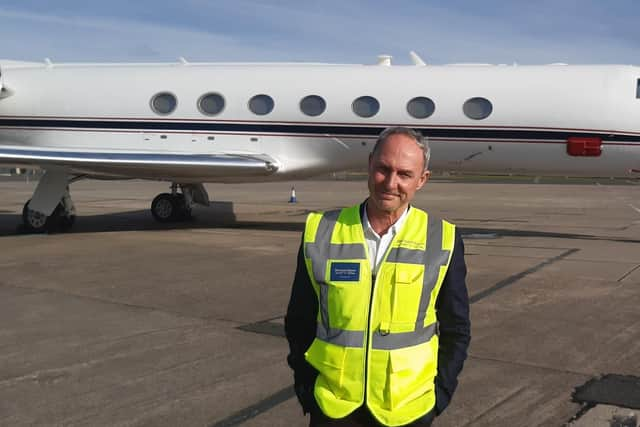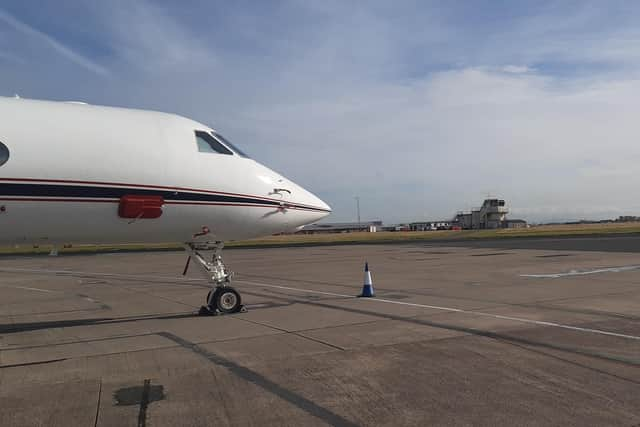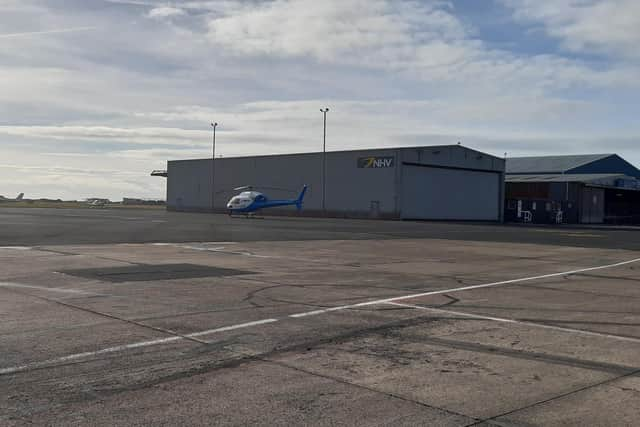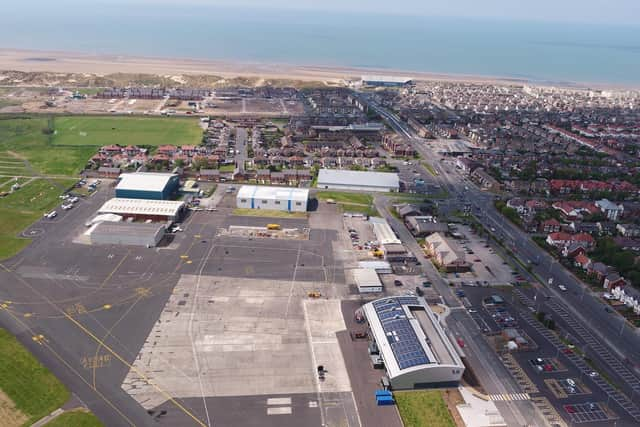New horizons for Blackpool Airport as 10 year action plan unveiled
and live on Freeview channel 276
Since taking charge in April, the New Zealand-born aviation specialist has been busy making plans for the airport whose history dates back to 1909 and the pioneers of flight.
But he is looking forward – not back – and believes Blackpool is well placed to take advantage of what is happening in the industry now and in the future.


Advertisement
Hide AdAdvertisement
Hide AdAnd that means getting a firm grip on technology such as hydrogen-fuelled planes, building state-of-the-art new hangars and updating crucial air traffic control systems.
A 10 year plan launched for the site also includes expanding the lucrative private jet market, promoting specialist charter flights, pilot training and attracting repair and overhaul services.
The latter would see holiday jets landing at the airport again – but only for maintenance.
Despite all his ambition for the airport, Steve is a pragmatist. The business model of airlines such as Jet2.com and Ryanair just will not work for Blackpool Airport no matter how much people wish it would.


Advertisement
Hide AdAdvertisement
Hide AdBut domestic passenger flights, including to the Isle of Man and Belfast, are a more likely possibility.
Steve said: “It’s about taking baby steps, and the first step would be to introduce 19 to 30 seater aircraft which would fly to the Isle of Man. We’re already in talks with a start-up airline on that.
“There could be further opportunities in the domestic market, so that could lead to a 30 to 50 seat aircraft, and then 50 to 70 seats with links to other smaller airports around the country.
“Our biggest goals over the next 10 years are to reduce the level of indebtedness to the council and become financially independent.


Advertisement
Hide AdAdvertisement
Hide Ad“Our 10 year plan has been approved by the board and the shareholder (the council).
“We don’t want the ratepayers of Blackpool subsidising the airport. It’s a business and that’s how we are running it.
“If something is commercially viable we will do it, and I’m very excited about our plans.”
Blackpool Council bought the airport from Balfour Beatty in September 2017 for £4.25m after it had been temporarily closed due to mounting debts.


Advertisement
Hide AdAdvertisement
Hide AdIn a recent blog, council leader Coun Lynne Williams said even at its peak in 2007, the airport lost £2m and during Balfour Beattie’s 10-year ownership, it lost around £27m.
Budget airlines make their money out of huge passenger volume, which puts small airports like Blackpool out of the running.
Even for just a few passenger flights, millions of pounds must be invested in security, passenger handling, baggage facilities etc.
Other smaller airports have also suffered financial woes in recent times, with Doncaster Sheffield Airport due to close at the end of October after it became financially unviable.
Advertisement
Hide AdAdvertisement
Hide AdIn July it was reported Teeside International Airport had made losses of more than £11.7m in the past financial year, following a £13.8m loss the previous year.
During its crisis years Blackpool only survived by the skin of its teeth thanks to valuable existing contracts, particularly its helicopter terminal servicing gas rigs in the Irish Sea.
Last November it also got a huge boost when the operating licences were transferred to the council by the Civil Aviation Authority (CAA).
It has also successfully come through two significant CAA audits this year for its air traffic control licence and and aerodrome audit.
Advertisement
Hide AdAdvertisement
Hide AdSteve adds proudly: “When they were here the people from the CAA said they could feel the sense of excitement and were full of praise for the team we have here.”
The airport now employs 45 people directly, and its air traffic control will be up to full strength from the beginning of 2023 as the final two members of staff complete their training.
Steve added: “We have a plan now, we know where we want to go and we are casting the net wide but focusing on the key areas to become self sufficient.”
And as for the return of commercial holiday flights – “Never say never” admits Steve, “but it’s not in our plans at the moment.”
Blackpool Airport 10 year plan
Advertisement
Hide AdAdvertisement
Hide AdRepair and overhaul – this could include attracting companies which service jets such as Boeing 737s and the Airbus A320, both used by the popular airlines. There is also potential for helicopter maintenance contracts.Pilot training – Westair already runs a flying school at the airport, but these opportunities could be expanded.Specialist charters linked to events such as Lytham Festival, Blackpool dance festivals, football matches or golf at Royal Lytham and St Annes. These could bring in inward bound passengers beneficial to Fylde coast tourism.Private jets building on Blackpool’s reputation for discretion and availability of take off and landing slots.Services for owners of small aircraft. This could even include opening a ‘destination eaterie’ drawing in pleasure pilots and plane spotters.Scheduled domestic flights linking Blackpool to the Isle of Man, Belfast and other regional airports.Special mission ops – Services including the North West Air Ambulance continue to have a base.Helicopter operater NHV continues to be the anchor tenant with its services for offshore rigs.
Infrastructure
Plans include ‘future-proofing’ the airport by exploring technology such as support for electric and hydrogen-fuelled aircraft. It is anticipated technology could make flights up to 50 per cent cheaper to operate, potentially making currently loss-making routes more viable.
New hangars – the first phase is expected to be four to six new hangars on the eastern side of the airport.
Air Traffic Control – The target is to introduce a new system within the next three years, with funding from the budget for the Blackpool Airport Enterprise Zone.
There are proposals for a new admin building, security and small passenger handling facility.
